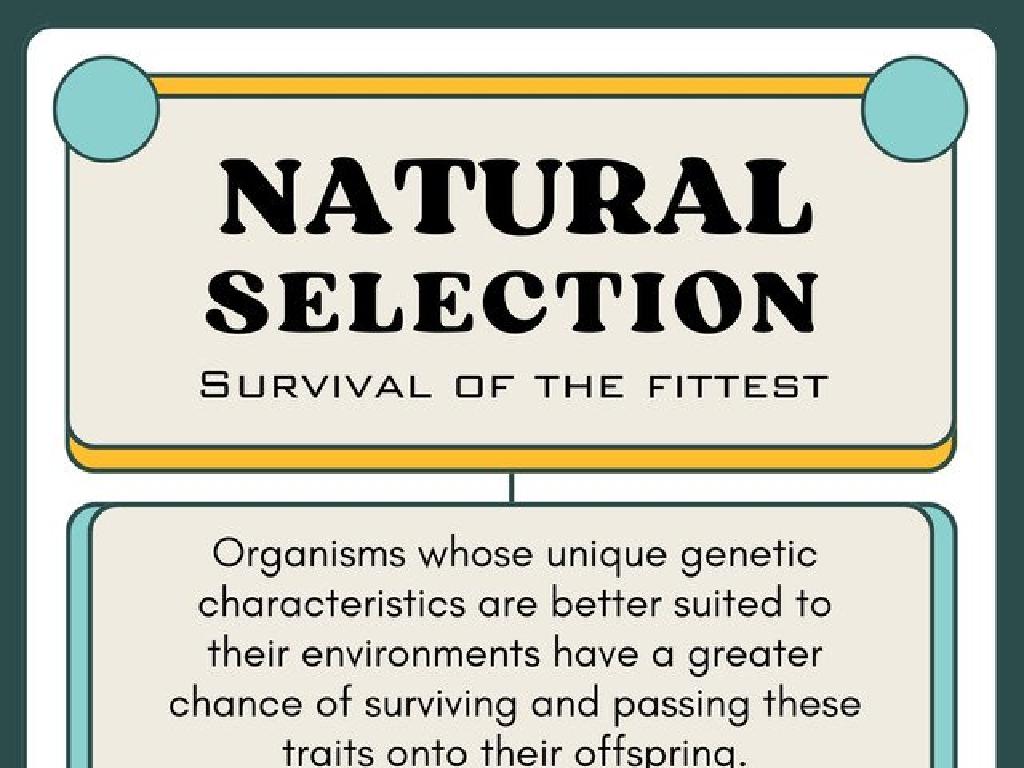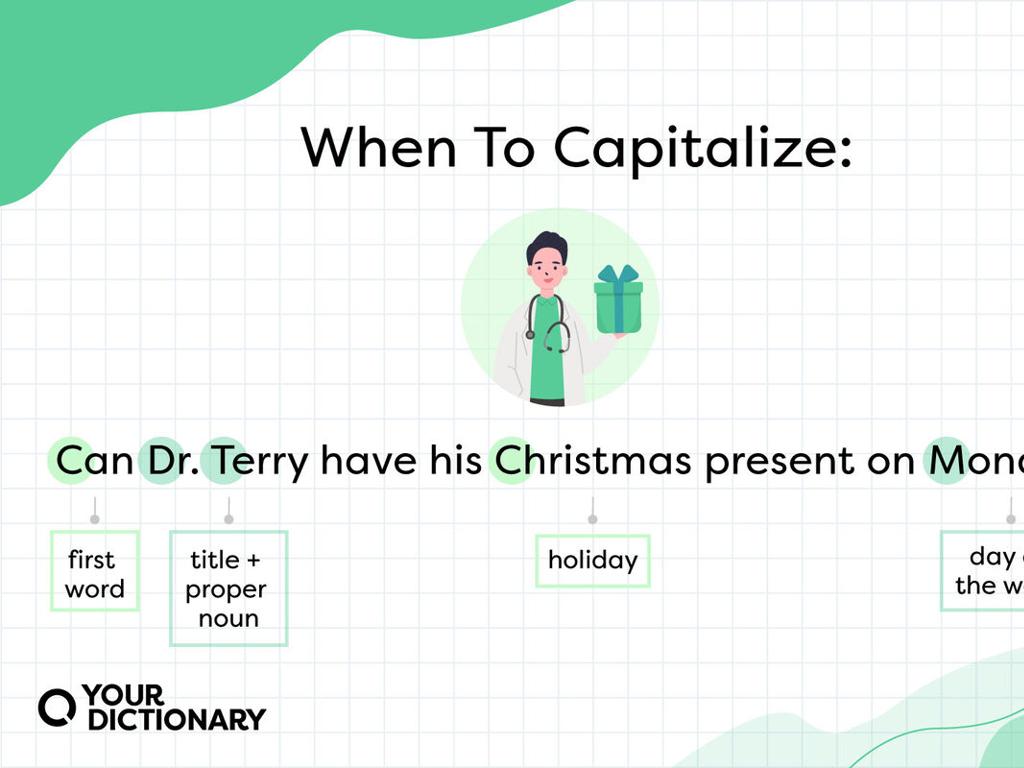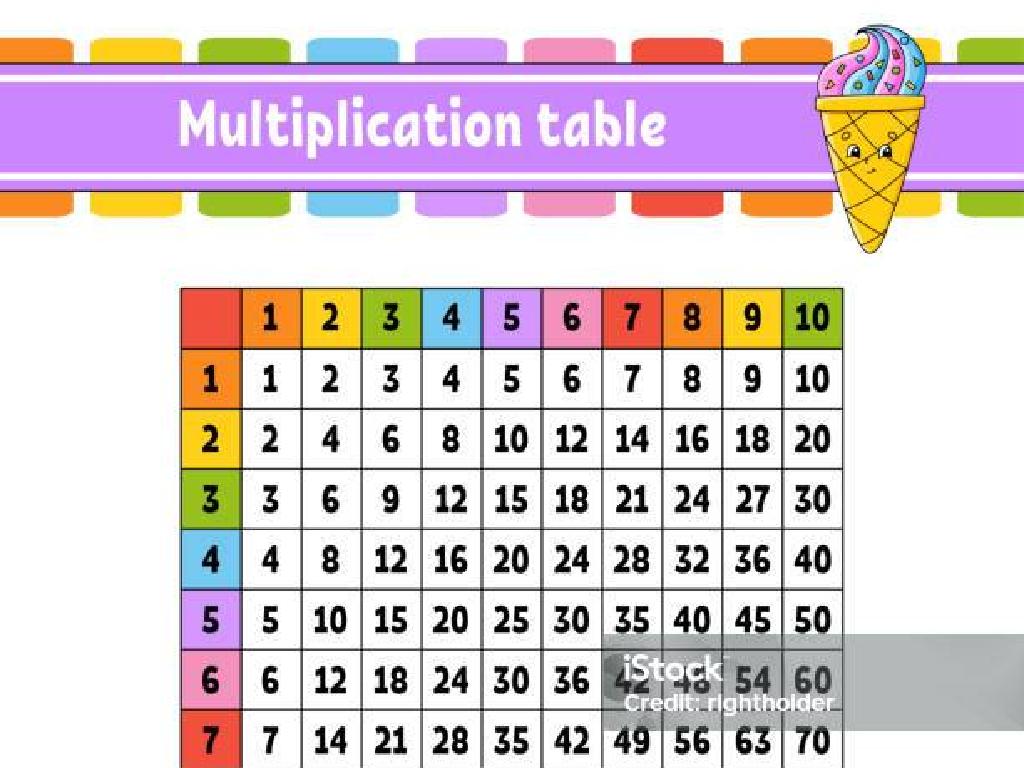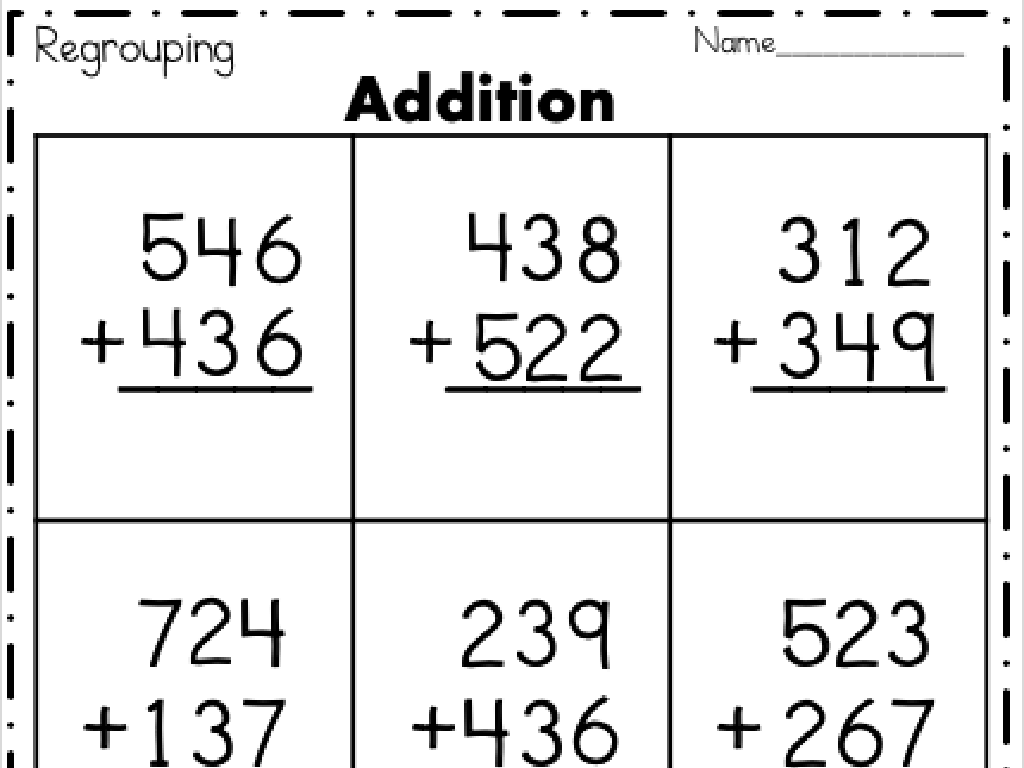Match The Short A And Long A Words To Pictures
Subject: Language arts
Grade: Second grade
Topic: Short And Long Vowel Patterns
Please LOG IN to download the presentation. Access is available to registered users only.
View More Content
Welcome to Vowel Patterns!
– Learn about short ‘a’ and long ‘a’ sounds
– Short ‘a’ as in ‘cat’, long ‘a’ as in ‘cake’
– Understanding vowel sounds is key
– Vowels are the building blocks of words
– Reading and writing improves with vowels
– Recognizing vowel sounds helps with spelling
– Match words to pictures activity
– Find examples of short ‘a’ and long ‘a’ in pictures
|
This slide introduces the concept of short and long vowel sounds, focusing on the letter ‘a’. Explain that vowels can make different sounds depending on how they’re used in a word. The short ‘a’ sound is like the ‘a’ in ‘cat’, while the long ‘a’ sound is similar to the ‘a’ in ‘cake’. Understanding these sounds is crucial for reading fluency and accurate spelling. Engage the students with an activity where they match words containing the short ‘a’ and long ‘a’ sounds to corresponding pictures, reinforcing their learning through visual aids. This interactive approach will help solidify their understanding of vowel patterns.
Exploring Vowels: The Letter ‘A’
– Vowels are special alphabet letters
– There are 5 vowels: A, E, I, O, U
– Today’s focus: the letter ‘A’
– ‘A’ has two sounds: short and long
– Short ‘A’ sounds like ‘apple’, long ‘A’ sounds like ‘ace’
|
This slide introduces the concept of vowels to second-grade students, emphasizing their importance in the English alphabet. Highlight the five vowels and focus on the letter ‘A’, explaining that it can make different sounds. The short ‘A’ as in ‘apple’ and the long ‘A’ as in ‘ace’ will be the main focus. Use visual aids like pictures of an apple and an ace card to help students associate the sounds with the images. Encourage students to practice the sounds and prepare for activities where they will match words with the short ‘A’ and long ‘A’ sounds to corresponding pictures.
Matching Sounds to Pictures: Short ‘a’
– The short ‘a’ sound as in ‘apple’
– Think of ‘a’ in ‘cat’, ‘bat’, ‘hat’
– It sounds like ‘ah’
– Like a doctor says, ‘Open up and say ah’
– Practice saying ‘ah’
– Match ‘ah’ sound to pictures
– Find pictures with the ‘ah’ sound
|
This slide introduces the short ‘a’ sound to second graders, helping them recognize and pronounce it correctly. Start by explaining that the short ‘a’ sound is similar to the first sound in ‘apple’ and is pronounced ‘ah’. Encourage the students to practice saying ‘ah’ as if they are at the doctor’s office. Then, move on to a matching activity where students will connect pictures of objects that have the short ‘a’ sound in their names to the written words. This could include words like ‘cat’, ‘bat’, and ‘hat’. The activity will reinforce their understanding of the sound and its association with the letter ‘a’.
Exploring Long ‘A’ Sounds
– Long ‘a’ as in ‘acorn’
– The ‘a’ in ‘acorn’ is stretched out
– It sounds like ‘ay’
– Like in ‘day’, ‘play’, and ‘stay’
– Practice saying ‘ay’
– Repeat after me: ‘ay’ for ‘acorn’
– Match ‘ay’ words with pictures
|
This slide introduces the long ‘a’ sound to second graders, helping them recognize and pronounce it correctly. Start by explaining that the long ‘a’ sounds like ‘ay’ and is found in words such as ‘acorn’. Have the students practice saying ‘ay’ to get comfortable with the sound. Then, move on to an interactive activity where students match words containing the long ‘a’ sound with corresponding pictures. This will help reinforce their understanding through visual association and pronunciation practice. Encourage participation and correct gently if they mispronounce, ensuring they feel confident with the long ‘a’ sound.
Matching Game: Short ‘a’ Sounds
– Learn to match short ‘a’ words
– Example: ‘cat’ goes with a cat picture
– ‘Cat’ has a short ‘a’ sound, like in ‘hat’, ‘bat’, and ‘mat’
– Find pictures that match words
– Look for the short ‘a’ sound in other words
– Get ready to share your matches
|
This slide introduces a matching game focused on the short ‘a’ sound, which is a fundamental concept in phonics for second graders. The objective is to help students associate the short ‘a’ sound with corresponding images, reinforcing their understanding through visual aids. Use the example of ‘cat’ to demonstrate how to match the word to the picture. Encourage students to look for the short ‘a’ sound in other words and find pictures that represent those words. During the next class, have students share their matches to promote active participation and to assess their grasp of the concept. Prepare a set of words with the short ‘a’ sound and corresponding images for the activity.
Matching Game: Long ‘a’ Sounds
– Match long ‘a’ words to pictures
– Example: ‘cake’ goes with a cake picture
– ‘cake’ sounds like ‘ay’ as in ‘day’
– Find pictures that represent the words
– Share your matches with the class
|
This slide introduces a matching game focused on the long ‘a’ vowel sound, which is pronounced like ‘ay’ in ‘day’. Students will practice connecting written words to visual representations, reinforcing their understanding of the long ‘a’ sound in a fun and interactive way. Provide a set of pictures and words for the students to match. Encourage them to say the words out loud as they find the corresponding pictures. After completing the activity, ask the students to share their matches with the class to ensure everyone has correctly identified the long ‘a’ sound. This will also serve as a pronunciation exercise. Prepare a variety of words and pictures to cater to different learning paces.
Practice Time: Matching Sounds to Pictures
– Match words to the right pictures
– Decide on short ‘a’ or long ‘a’ sound
– Is it ‘cat’ (short ‘a’) or ‘cake’ (long ‘a’)?
– Drag each word to its picture
– Have fun with vowel sounds!
– Remember, short ‘a’ sounds like ‘apple’, long ‘a’ like ‘ace’
|
This activity slide is designed to help students practice distinguishing between short ‘a’ and long ‘a’ sounds in words. Provide a variety of words and corresponding pictures on the slide or in a handout. Students will drag the word to the picture that represents it, paying attention to the vowel sound. For example, ‘cat’ would match with a picture of a cat, and ‘cake’ would match with a picture of a cake. Encourage students to say the words out loud to hear the vowel sound. This kinesthetic activity helps reinforce phonemic awareness and is a fun way for students to engage with vowel patterns. Offer guidance and be ready to provide assistance as needed.
Class Activity: Vowel Craft
– Create a vowel flip book
– Each page has a short ‘a’ or long ‘a’ word
– Examples: ‘cat’ for short ‘a’, ‘cake’ for long ‘a’
– Add a matching picture to your word
– Draw or paste a picture that represents the word
– Share your flip book with a classmate
|
This activity is designed to help students differentiate between short ‘a’ and long ‘a’ sounds through a creative craft. Provide students with materials to create a flip book, such as paper, markers, and scissors. Guide them to choose words with short ‘a’ and long ‘a’ sounds and illustrate each with a corresponding picture. Encourage creativity in their drawings or choice of images to paste. Once completed, students should practice reading their flip books to each other, reinforcing their understanding of vowel sounds and enjoying the interactive element of sharing their work. Possible words include ‘hat’, ‘bat’, ‘rat’ for short ‘a’, and ‘gate’, ‘plate’, ‘snake’ for long ‘a’.
Review and Goodbye!
– Excellent work on ‘a’ sounds!
– Practice makes perfect
– Listen for ‘a’ sounds in reading
– Try to hear short ‘a’ as in ‘cat’ and long ‘a’ as in ‘cake’.
– Keep up the great work!
|
This slide is a positive reinforcement for the students, acknowledging their efforts in learning the short ‘a’ and long ‘a’ vowel sounds. It’s important to encourage them to continue practicing these sounds outside of the classroom. Remind them to pay attention to the words they come across in their daily reading, whether it’s during storytime, homework, or reading for pleasure. Reinforce the idea that recognizing these sounds will become easier with practice. You can suggest that parents read with their children and pause to discuss the different ‘a’ sounds in words they encounter. This will help solidify their understanding and make reading a fun and interactive experience.






